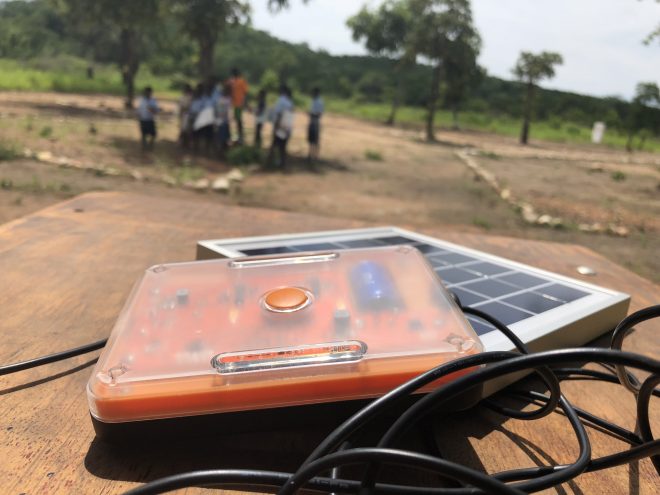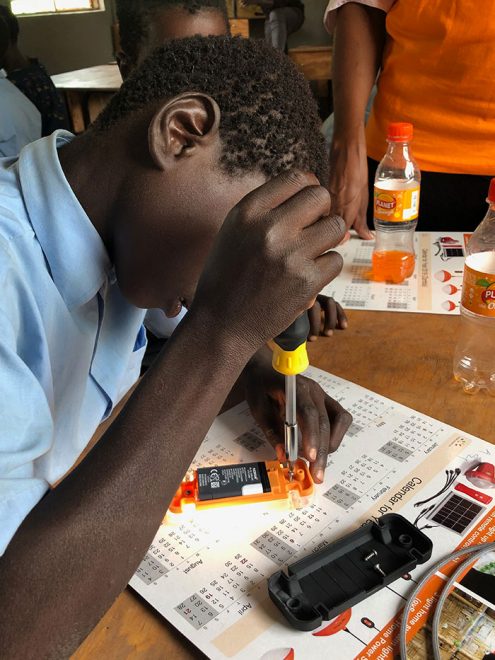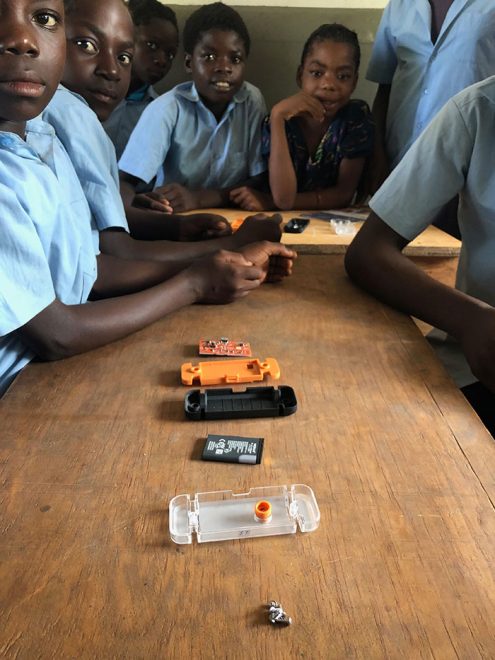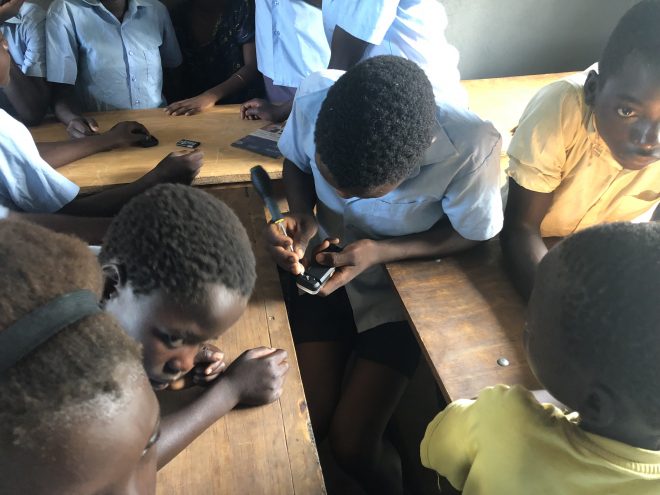National Museums Scotland is excited to have recently welcomed a “Solar What?!” into its energy collection as an example of Scottish technological innovation that has the potential to have genuine positive impact on the lives of people in developing countries as well as helping to tackle plastic pollution and electronic waste.
But what on earth is a Solar What?! and what is so significant about it?
Put simply, the Solar What?! is a solar-powered torch. It has been developed by the University of Edinburgh’s School of Social and Political Science in partnership with Edinburgh-based design agency Cramasie, in response to the fact that existing solar lamps break down easily, rendering them useless to those who rely on them and contributing to the global problem of plastic pollution.

In 2010, the BBC and the British Museum produced a list of 100 objects that told the history of the world. The final of these was a solar lamp and charger, chosen to reflect human ingenuity in the face of 21st-century challenges.

More than one and a half billion people internationally do not have access to an electrical grid and the easy power that brings in the form of heat and light that many of us are so accustomed to. The solar-powered lamp was seen as life-changing, as it allowed people to work, study and socialise even when the sun wasn’t shining. It also allowed people to switch from using kerosene lamps, which are dangerous and can have a negative impact on health.
Many of the solar lamps in circulation are not, however, designed to be repaired. The switches break quickly, the batteries reach the end of their charging cycle and, if a user attempts to open a unit to fix it or replace components, the plastic casing breaks easily as it was never intended to be treated this way. Like most of the electronic goods we use in our day to day lives, when a solar lamp breaks down, it is intended to be replaced. In short, despite being designed for use by some of the world’s poorest people with incredibly limited access to resources, it has built-in obsolescence, rendering it useless to the user who invested in and relies on it, and dangerous to the environment.
According to Dr Jamie Cross of the University of Edinburgh, current estimates suggest that electronic waste from the off-grid solar industry is equivalent to the electronic waste from the mobile phone industry, a fact that will shock many people who generally accept that the solar industry is clean and well-intentioned.

Dr Cross and colleagues from the University of Edinburgh’s School of Social and Political Science have undertaken extensive field research in South Asia and Sub Saharan Africa, looking at cultures and economies of repair. They have also analysed many of the existing solar-powered products on the market, rating them according to their repairability and recyclability. This has all helped to inform the design of the Solar What?! As a result, a product has been created that comes at a minimal cost to the user, particularly in terms of on-going replacement and maintenance, and minimal cost to the environment.
The Solar What?!’s solar panel, adapter unit and lamp are held together with screws that can easily be removed to give access to the components as required. The batteries are standard mobile phone batteries that are readily available internationally and can easily be replaced by a non-expert user. All of the components can be unsoldered and replaced and it is intended that repair information will be made widely available to users. The adapter unit means that it is possible to charge the lamp using a variety of solar panels so a user can make use of what is available to them rather than being tied to the panel that came from the supplier.

25 prototype devices have been made so far, and efforts have been made to use ethical suppliers for the components. When the device goes into large-scale production, it is hoped that sustainable materials will be used as far as possible throughout, and each part will be clearly labelled with reused and recycling information.

The University of Edinburgh is currently working with charity, SolarAid, to pilot the Solar What?! with families and school children in Zambia. It is also inviting orders for the lamp from the UN and charities and is looking for expressions of interest from international solar manufacturers looking to licence the design for regional markets.

Find out more at www.solarwhat.xyz
